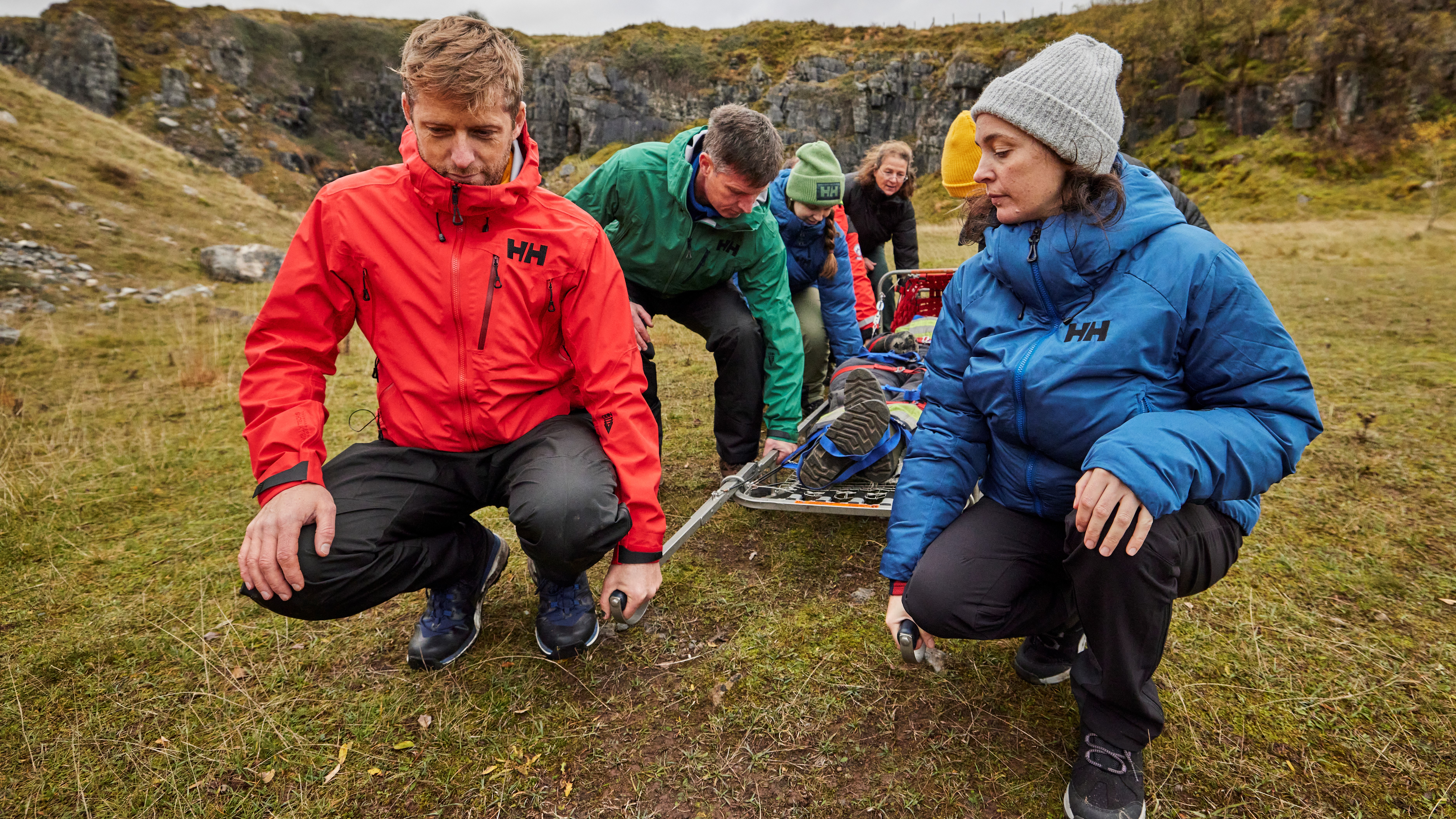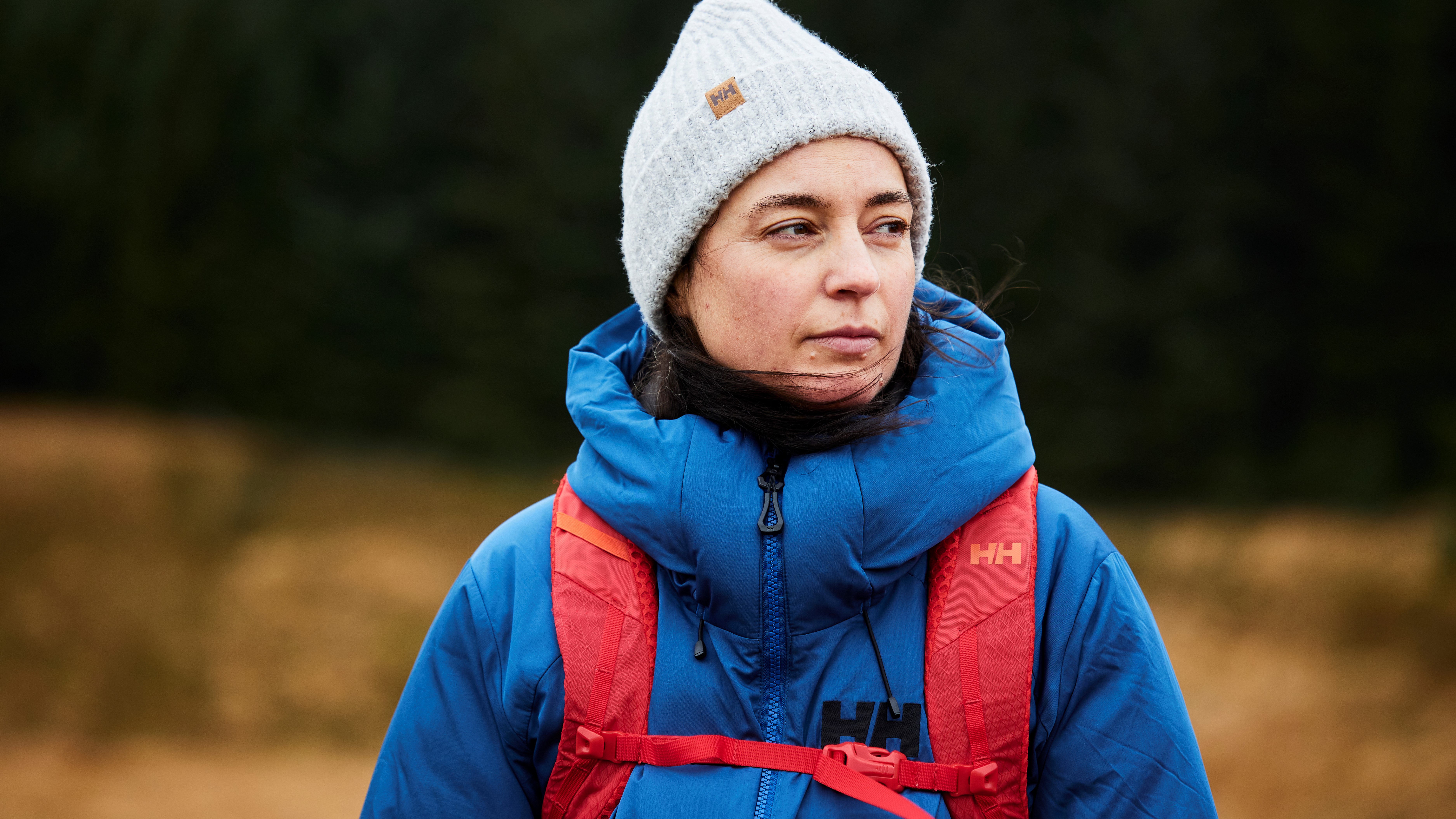Advnture Verdict
For a frigid trek, mountaineering and even cold urban pursuits, you’ll never be warmer than when you’re wearing this insulated, waterproof mountain jacket
Pros
- +
Extremely warm and cozy with sheet insulation and fiber balls
- +
Waterproof, with chemical-free hydrophobic fabric
- +
Breathable and quick drying
- +
Eco-friendly
- +
Four deep pockets
- +
Flat brimmed hood stays up in a breeze
- +
More packable than you’d expect
Cons
- -
Pricey
- -
Heavier and bulkier than your average insulated jacket
You can trust Advnture
Helly Hansen Lifa Pro Belay Insulated Jacket: first impressions
Calling this a mountain jacket, Helly Hansen worked with mountain rescue teams to design a seriously warm, protective outer layer for anyone who needs to stay safe and dry while spending long hours on cold mountain sides. The result is superior warmth provided by a combination of LIFALOFT sheet insulation and PrimaLoft GOLD fiber balls optimized by body mapping, meaning more insulation in the areas where you need it the most. This jacket looks and feels a bit like your favorite comforter and might even lead you to think you’re invincible in cold weather. Adding to the impressive insulation, it comes with wet weather protection that’s made using hydrophobic fabric and a PFC-free DWR treatment for next-level eco-friendly waterproofing.
• List price: $450 / £400
• Unisex: Men’s and women’s fits available
• Weight: 2lbs / 907g (women’s small)
• Sizes available: Men’s: S - XXL; Women’s XS - XL
• Materials: Shell: 100% Polypropylene; Lining: 100% Polyamide; Insulation back body: 50% Polypropylene, 50% Recycled polyester; Insulation hood: 70% Polypropylene, 30% Polyester
• Colors: Black, deep fjord
• Best use: Winter hiking and camping, mountaineering, ski touring
You can expect some bulk from this jacket, and it’s certainly not as light as your typical down jacket for winter hiking. That said, it’s surprisingly breathable if you do work up a sweat in it, and packs down to about the size of a small backpacking sleeping bag. If you’re braving stormy weather in it, the high profile hood stays up in a gale and keeps the rain out, while an adjustable draw cord on the hem seals out any unwanted drafts. If you’re using the two hip pockets to keep your hands warm, you still have two deep inner pockets (one zipped) to stash your essential gear so you don’t have to rummage around in your backpack for your compass.
For a short hike in cold weather, a lighter down jacket will suffice and at the price, you’ll probably only consider this for serious expeditions, but if you do take it out on one you won’t be disappointed by its performance.
Helly Hansen Lifa Pro Belay Insulated Jacket: in the field

Let’s get one thing straight: this isn’t your typical insulated jacket for your average hike. The Helly Hansen Lifa Pro Belay Insulated Jacket is a burly (albeit lighter than you’d think to look at it) mountaineering jacket that was developed for extreme conditions. I first tested it out during a training day with Western Beacons Mountain Rescue team in Wales and though it wasn’t an especially cold day, the training involved a lot of standing around and by the end of it, I was happy to have so much protection.
When I returned home to Scotland, we soon underwent a cold snap with temperatures dropping down to -15°C for over a week straight and let me tell you, I was the envy of everyone in my household and this jacket saw a lot of use. Though it’s definitely not something I’d casually throw on for a typical cold weather hike, I trust it totally for extreme conditions and so far I’ve found a lot to love about.
Here’s how it performed:
Comfort and fit
This jacket runs a little large – I typically wear a women’s small and found this small to definitely be on the bigger end, but that also leaves loads of room for layering a fleece and base layer beneath it, which is kind of the point, especially given that Helly Hansen invented the layering system. I personally like the bagginess and the fact that I can just tuck my hands inside the sleeves, but for a more streamlined fit, you may want to size down.
All the latest inspiration, tips and guides to help you plan your next Advnture!
As for comfort, wearing this thing literally feels like being wrapped up in my favorite duvet. It’s so cozy and snug and I happily wear it around town when it’s freezing out and imagine myself to be the envy of all the land.
Weather protection and breathability
Looping back to my comment about this jacket being like a duvet, I was understandably dubious that it could also be waterproof. The first day I tested it was dry, but when I went home I dumped several glasses of water on it in a very non-scientific test and the water beaded up just like they say it will and it was dry minutes later. Reassured, I’ve worn it out on a few cold, wet adventures lately and been happy.
It is extremely warm and windproof, which is essential for mountain rescue teams who sometimes spend days on missions, and the general bulkiness and warmth also made me doubt its breathability, but it really does let me sweat on an uphill without having to unzip.

Weight and packability
Because this jacket looks quite bulky, it’s actually lighter than I expected, but that’s not to say it’s comparable to your average down jacket in terms of weight. It will add a couple of pounds to your backpack, which would make me think twice if the conditions weren’t really calling for that level of protection.
The same goes for packability. At a glance, you wouldn’t think this packs down small and I’m not going to lie and say that it stuffs down to the size of a gerbil. It doesn’t, but when I packed it in a stuff sack it was about comparable to my ultralight camping quilt, which is impressive.
Value and durability
This is a pricey jacket meant for serious expeditions, so if you’re a casual adventurer, it’s probably not worth the price. But the price itself speaks to the garment’s high quality (and durability) and performance power, so if you really need this level of protection, it’s a small (okay, medium) price to pay for being warm and dry up high.
Julia Clarke is a staff writer for Advnture.com and the author of the book Restorative Yoga for Beginners. She loves to explore mountains on foot, bike, skis and belay and then recover on the the yoga mat. Julia graduated with a degree in journalism in 2004 and spent eight years working as a radio presenter in Kansas City, Vermont, Boston and New York City before discovering the joys of the Rocky Mountains. She then detoured west to Colorado and enjoyed 11 years teaching yoga in Vail before returning to her hometown of Glasgow, Scotland in 2020 to focus on family and writing.


